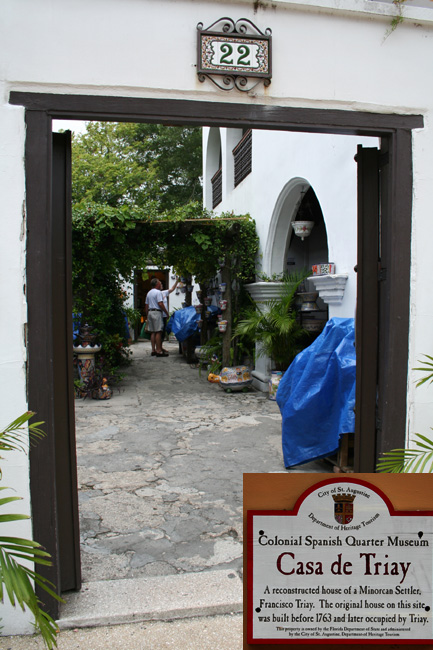
San Agustín, St. Augustine (10) |
 |
|---|
Source: WTL photograph© (June 2007). Image: Inner courtyard (patio) of the Casa de Triay, a Spanish colonial house built before 1763, that is, during the First Spanish Period (1565-1763). Comments: During the twenty-year British period (1763-1783), the English tried to establish an English colony and indigo plantation at New Smyrna south of St. Augustine on the Atlantic Coast by importing settlers from the Balearic Island of Minorca in the Mediterranean, which island had just passed to British control as a result of the treaty at the end of the Seven Years War, which Spain lost. Among the nearly 1300 indentured settlers were Minocans, Greeks, and Italians. Many of these indentured immigrants died in Florida's difficult climate; when the New Smyrna indigo colony failed in 1778, the survivors moved to San Agustín, which remained in English hands until 1783. When the British left that year, the Minorcans, who were mostly Catholic and at least partially Spanish speaking, decided to stay, and their influence has been felt in St. Augustine ever since. The owner of this house after 1784 was Francisco Triay, a Minorcan. Latin American humanities: 18th century Spanish colonial architecture . |
|---|
 |